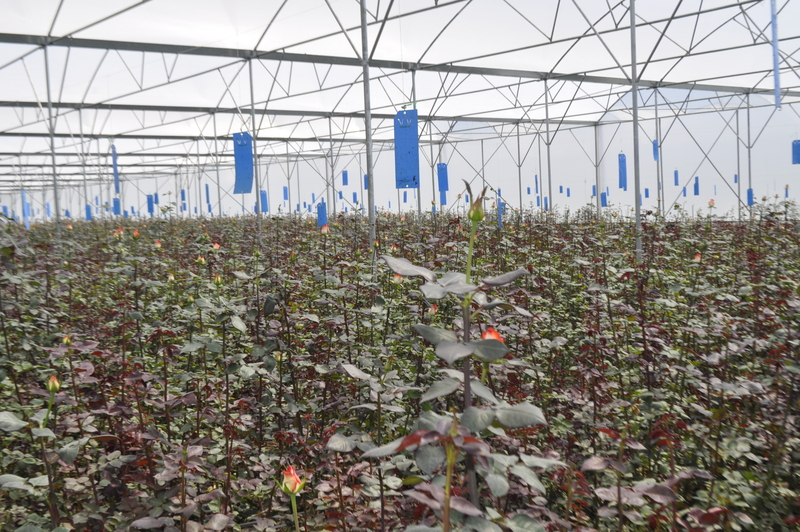
One of the most common and destructive pests in greenhouse growing of ornamentals, particularly roses, is thrips. Prevention is possibly the best way to manage this pest. Blue sticky traps are one of the most important tools commonly used for monitoring and controlling adult thrips. While most greenhouse growers know of their existence, some go wrong by assuming that all sticky traps in the market are identical. Effective thrips control starts with careful selection of sticky traps of impeccable quality. As a rule of thumb, a good sticky trap should maintain its original shape and trapping capacity in all weather conditions and serve its purpose for a long duration of time.
Scientific studies have proven that traps that reflect certain wavelengths of blue are more effective at capturing thrips. This is because, most insects including thrips, have the ability to detect and respond to UV light and colours using receptors. Western flower thrips in particular has good sensitivity to particular wavelengths of UV, green-yellow and blue colour. This is important to note because even if two colours may look exactly the same to the human eye, the photoreceptors on insects enable them to identify slight colour differences. As such, to use sticky traps efficiently, it is important to choose the brand of cards with the shade of colour that the thrips are most attracted to.
Horiver offers top quality
Horiver sticky traps are consistently recognized among growers for their excellent quality. In various local trials and independent studies in other parts of the world, Horiver sticky traps were recorded to catch more thrips than other traps. Even at low pressure spots, Horiver sticky traps had more trapping capacity than other blue traps. This allows growers to get a more reliable picture of the pest pressure and make more accurate counts. In addition, the strong, long lasting sticky layer provides added value. The attracted insects land on the card and are stuck fast, letting you know for sure what pests are in your greenhouse and you can take appropriate measures.
By maintaining yearly trap sampling records, growers can get an indication of when a pest typically starts to invade the greenhouse and when peaks in its activity can be expected. Horiver traps do not lose the adhesive strength even in extremely high temperatures, consistently giving better thrips control than other traps.
What do growers say?
Growers who have successfully integrated Horiver traps for mass trapping of thrips have consistently reported successful results. They were also pleased to realize that Horiver sticky traps enabled them to avoid unnecessary spray applications.
How to Use
Place Horiver sticky traps just above the plant tips, and no more than 30cm above the plants. As the crop grows, move the traps higher. For monitoring purposes, it is recommended to use 10 traps per hectare. For mass trapping, use 1000 traps per hectare. It is important to put up Horiver traps early in the season before thrips pressure starts to build up in order to prevent an epidemic. Early identification will help you take appropriate measures before the pest can multiply and cause serious damage. Keep accurate records and change the traps regularly in order to get the most out of them.